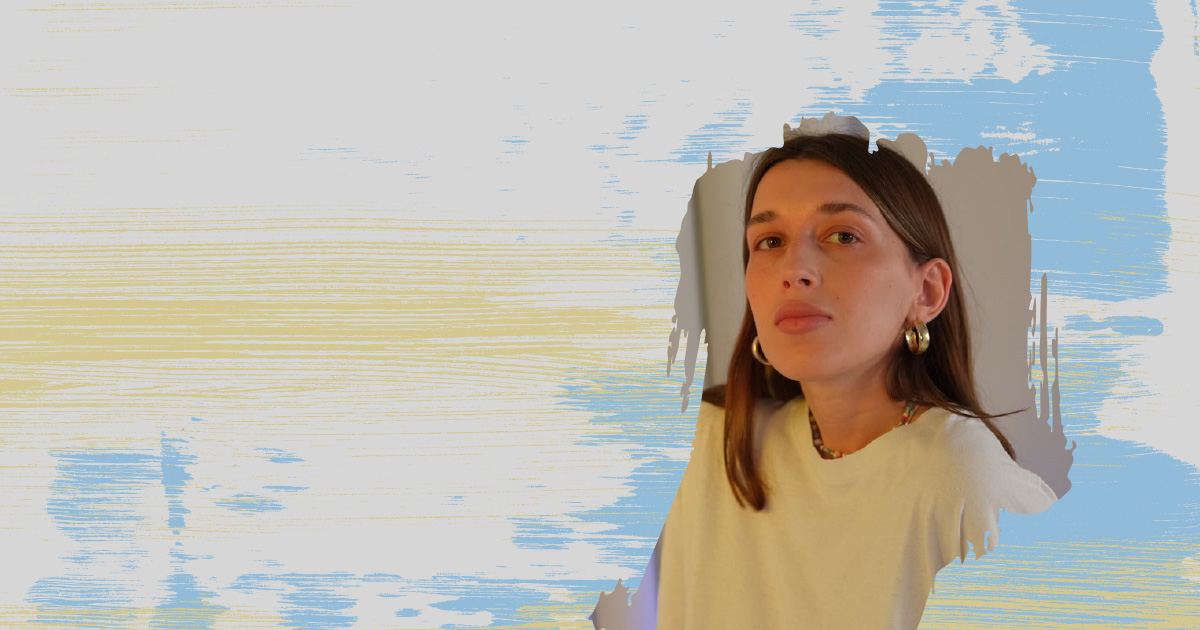Artists Against War: The Visual Language of War. An Interview with Katalina Maievska

Svidomi in collaboration with Artists Against War, an online gallery of posters created to support Ukraine after the Russian full-scale invasion, tell the stories of the artists who help Ukraine by means of art. Read an interview with the designer Katalina Maievska.
— What was your main activity before the full-scale war?
— The same as it is now. I am a designer. I work in the Kunsht popular science magazine, and I also have freelance projects. My specialization is identity, and I sometimes do illustration because this also belongs in the list of my competencies and skills as a designer.— Can you describe your day of February 24 and the events that followed?
— The tension could be felt even before. There was some awareness of what it could all lead to. But the human psyche works in such an interesting way, protecting us, that it constantly seemed that the beginning of the invasion would definitely not be today, not tomorrow, and not next week. And when it actually began, for a long time I could not embrace this reality, understand what was going on, and realize that it was really happening.I am originally from Kyiv, but on that day I was not at home. We went to the city of Rivne, on business and to visit our friends. We didn't have any documents with us, nor a go-bag. As the comedian Vasyl Baidak says: "A go-bag is a bag that is either not there, or is empty." That's how it turned out for us.In Rivne, we were welcomed by the people at whose place we lived for four months. At that time all our preferences as for personal comfort were gone, and everyone was united.
— The things you drew, was it a reflection or rather a way to distract yourself?
— My first patriotic illustration was back on February 22, when Vladimir Putin recognized the so-called ‘independence’ of the so-called ‘L/DNR’.
Illustration is a kind of protection. Moreover, I was overflowing with emotions, and needed to sublimate them into something. Therefore, answering your question, it was rather a reflection. But it was also difficult to sit idly by.
— There were no illustrations in your profile for a long time. Have you returned to your main job yet?
— I have been doing my main job all this time. We at Kunsht also worked on the topics of the war and everything related to it. But back then I had no freelance projects, and now there are a lot of them, so there is no time to draw. And my psyche can't stand to be constantly absorbed in this.
— In your opinion, what is the role of art in a war?
— I have noted several main points for myself:
First, it is important for the artist himself/herself. Basically, it works like therapy. I was drawing with such anger and such speed that my hands hurt. And again, this serves as a great protection for the psyche.Secondly, for society. So that people could simply take these posters and go to mass-meetings, rallies, and protests.
Thirdly, for Ukraine. You can sell the drawings, and then send some of the proceeds or the full amount to support the Armed Forces of Ukraine or those who have suffered from the war.
— Have you noticed the interest in your works from people from other countries?
— Yes, of course. In the first few weeks, a lot of people DM’ed me. Some of them took my works to mass-meetings; others offered to use my illustrations for printing, for example, on T-shirts, and then sell them; design agencies asked for my drawings to use them in exhibitions. Eventually, the New York Times approached me, and I worked with them.


